
Thomas Mifflin was an American merchant, soldier, and politician from Pennsylvania, who is regarded as a Founding Father of the United States for his roles during and after the American Revolution. Mifflin signed the United States Constitution, was the first governor of Pennsylvania, serving from 1790 to 1799, and was also the state's last president, succeeding Benjamin Franklin in 1788.

The Continental Congress was a series of legislative bodies, with some executive function, for the Thirteen Colonies of Great Britain in North America, and the newly declared United States before, during, and after the American Revolutionary War. The Continental Congress refers to both the First and Second Congresses of 1774–1781 and at the time, also described the Congress of the Confederation of 1781–1789. The Confederation Congress operated as the first federal government until being replaced following ratification of the U.S. Constitution. Until 1785, the Congress met predominantly at what is today Independence Hall in Philadelphia, though it was relocated temporarily on several occasions during the Revolutionary War and the fall of Philadelphia.

The President, Directors and Company of the Bank of the United States, commonly known as the First Bank of the United States, was a national bank, chartered for a term of twenty years, by the United States Congress on February 25, 1791. It followed the Bank of North America, the nation's first de facto national bank. However, neither served the functions of a modern central bank: They did not set monetary policy, regulate private banks, hold their excess reserves, or act as a lender of last resort. They were national insofar as they were allowed to have branches in multiple states and lend money to the US government. Other banks in the US were each chartered by, and only allowed to have branches in, a single state.
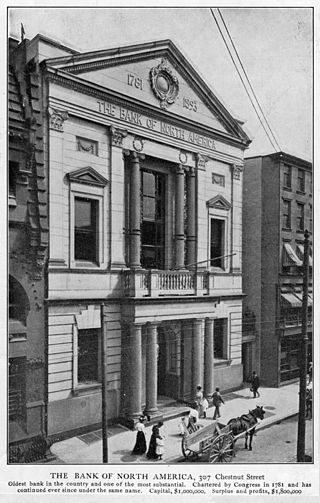
The Bank of North America was the first chartered bank in the United States, and served as the country's first de facto central bank. Chartered by the Congress of the Confederation on May 26, 1781, and opened in Philadelphia on January 7, 1782.

Robert Morris Jr. was an English-American merchant and a Founding Father of the United States. He served as a member of the Pennsylvania legislature, the Second Continental Congress, and the United States Senate, and he was a signer of the Declaration of Independence, the Articles of Confederation, and the United States Constitution. From 1781 to 1784, he served as the Superintendent of Finance of the United States, becoming known as the "Financier of the Revolution." Along with Alexander Hamilton and Albert Gallatin, he is widely regarded as one of the founders of the financial system of the United States.
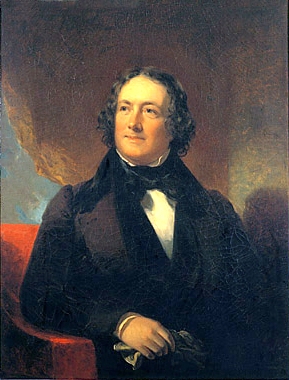
Nicholas Biddle was an American financier who served as the third and last president of the Second Bank of the United States. Throughout his life Biddle worked as an editor, diplomat, author, and politician who served in both houses of the Pennsylvania state legislature. He is best known as the chief opponent of Andrew Jackson in the Bank War.

The Province of Pennsylvania, also known as the Pennsylvania Colony, was a British North American colony founded by William Penn, who received the land through a grant from Charles II of England in 1681. The name Pennsylvania was derived from "Penn's Woods", referring to William Penn's father Admiral Sir William Penn.

Haym Salomon was a Polish-American Jewish businessman and political financial broker who assisted the Superintendent of Finance, English-born Robert Morris, as the prime financier of the colonists' side during the American Revolutionary War against Great Britain.

Thomas Willing was an American merchant, politician and slave trader who served as mayor of Philadelphia and was a delegate from Pennsylvania to the Continental Congress. He also served as the first president of the Bank of North America and the First Bank of the United States. During his tenure there he became the richest man in America.
Lewis Nicola was an Irish-born American military officer, merchant, and writer who held various military and civilian positions throughout his career. Nicola is most notable for authoring the Newburgh letter, which urged George Washington to assume a royal title. Born in Dublin, Ireland, Nicola had been an officer in the British Army, serving in Europe before immigrating to the Thirteen Colonies. Establishing a residence in Philadelphia with his family, Nicola opened a library in 1767 and was active in colonial philosophical organizations. As a result of his work to establish the American Philosophical Society, he was elected as one of its curators. When the American Revolution broke out, Nicola offered his services to the colonial government, which eventually appointed him to various positions with local forces.
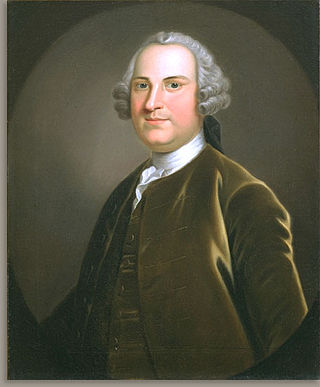
Charles Willing was an English-born merchant and politician who twice served as the mayor of Philadelphia, from 1748 until 1749 and again in 1754.
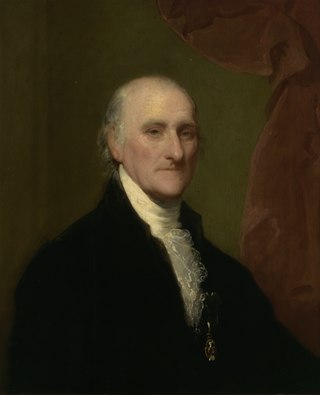
Samuel Miles was an American military officer and politician, as well as an influential businessman and politician, active in Pennsylvania before, during, and after the American Revolutionary War.

Pennsylvania was the site of many key events associated with the American Revolution and American Revolutionary War. The city of Philadelphia, then capital of the Thirteen Colonies and the largest city in the colonies, was a gathering place for the Founding Fathers who discussed, debated, developed, and ultimately implemented many of the acts, including signing the Declaration of Independence, that inspired and launched the revolution and the quest for independence from the British Empire.

Carpenters' Hall, in Independence National Historical Park in Philadelphia, Pennsylvania, is the official birthplace of the Commonwealth of Pennsylvania and a key meeting place in the early history of the United States. Completed in 1775, the two-story brick meeting hall was built for and still privately owned by the Carpenters' Company of the City and County of Philadelphia, the country's oldest extant craft guild.
John Swanwick was an American merchant, poet and politician. He served in the Pennsylvania General Assembly and from 1795 to 1798 served in the United States representative from Pennsylvania in the 4th and 5th congresses.

St. Peter's Church is a historic Episcopal church located on the corner of Third and Pine Streets in Philadelphia, Pennsylvania. It opened for worship on September 4, 1761 and served as a place of worship for many of the United States Founding Fathers during the period of the Continental Congresses. The building was designated a National Historic Landmark in 1996. The church remains an active parish; the current priest-in-charge is the Rev. Dr. Clarke French.
The Panic of 1796–1797 was a series of downturns in credit markets in both Great Britain and the newly established United States in 1796 that led to broader commercial downturns. In the United States, problems first emerged when a land speculation bubble burst in 1796. The crisis deepened when the Bank of England suspended specie payments on February 25, 1797 under the Bank Restriction Act of 1797. The Bank's directors feared insolvency when English account holders, who were nervous about a possible French invasion, began withdrawing their deposits in sterling rather than bank notes. In combination with the unfolding collapse of the U.S. real estate market's speculative bubble, the Bank of England's action had deflationary repercussions in the financial and commercial markets of the coastal United States and the Caribbean at the start of the 19th century.

Superintendent of Finance of the United States was the head of Department of Finance, which is an executive office during the Confederation period with power similar to a finance ministry. The only person to hold the office was Robert Morris, who served from 1781 to 1784, with the assistance of Gouverneur Morris.

John Barclay was an American soldier, politician, and jurist. He served in the Continental Army during the American Revolution. He served as President Judge of the Courts for Bucks County, Pennsylvania, alderman in Philadelphia, and Mayor of Philadelphia from 1791 to 1793. He worked as president of the Bank of Pennsylvania and was one of the founders of the Insurance Company of North America. He served as a Federalist member of the Pennsylvania State Senate for the 1st district from 1811 to 1813.
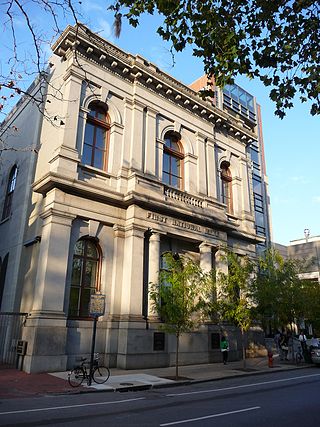
First National Bank was a bank in Philadelphia. Chartered in 1863, it was the first national bank created under the banking reforms of the Civil War that began to define the modern U.S. banking system, and the first commercial bank to issue a federal banknote. It operated independently until 1955, when it was merged into the Bank of North America and Trust Company, which now is part of Wells Fargo.


















